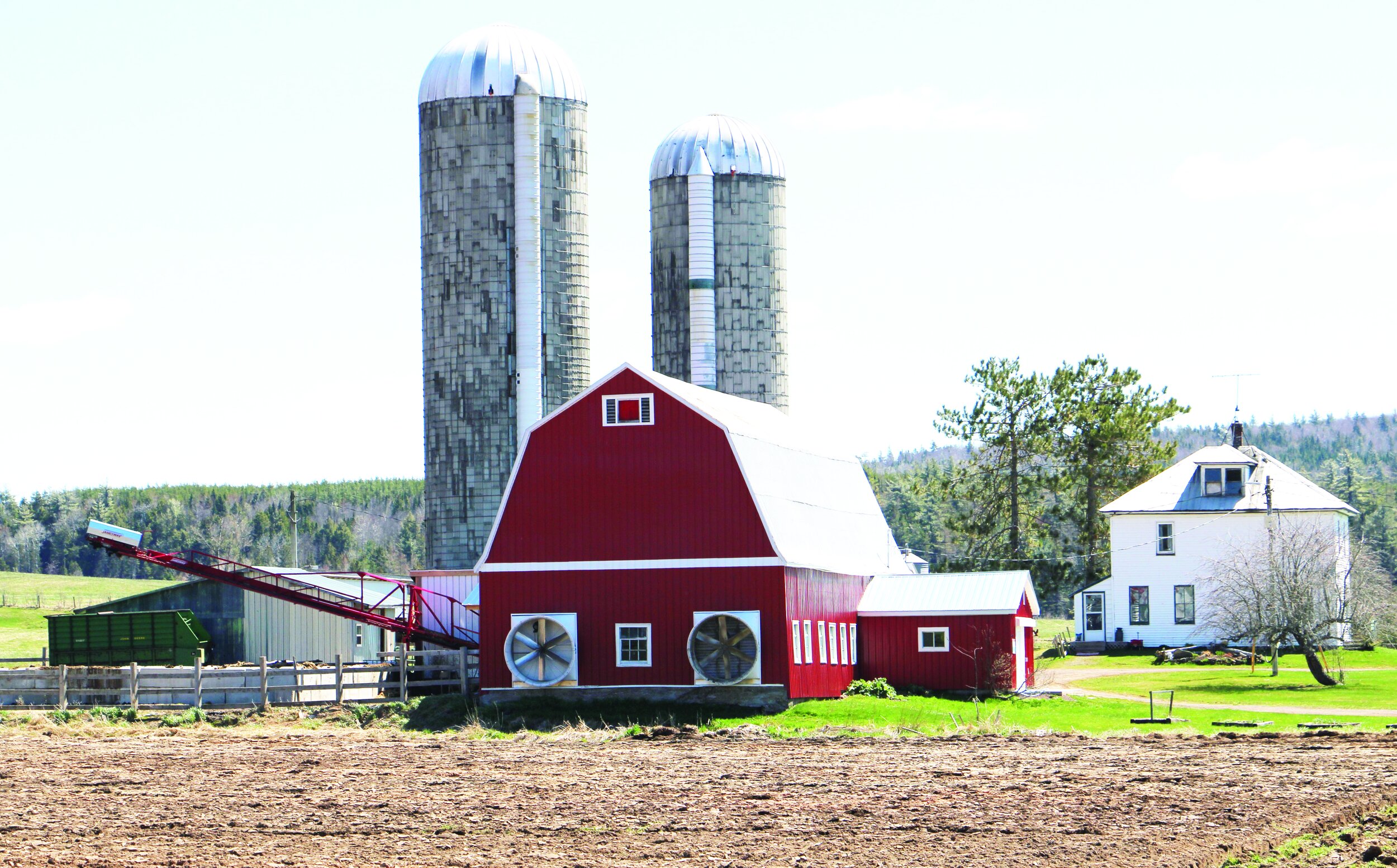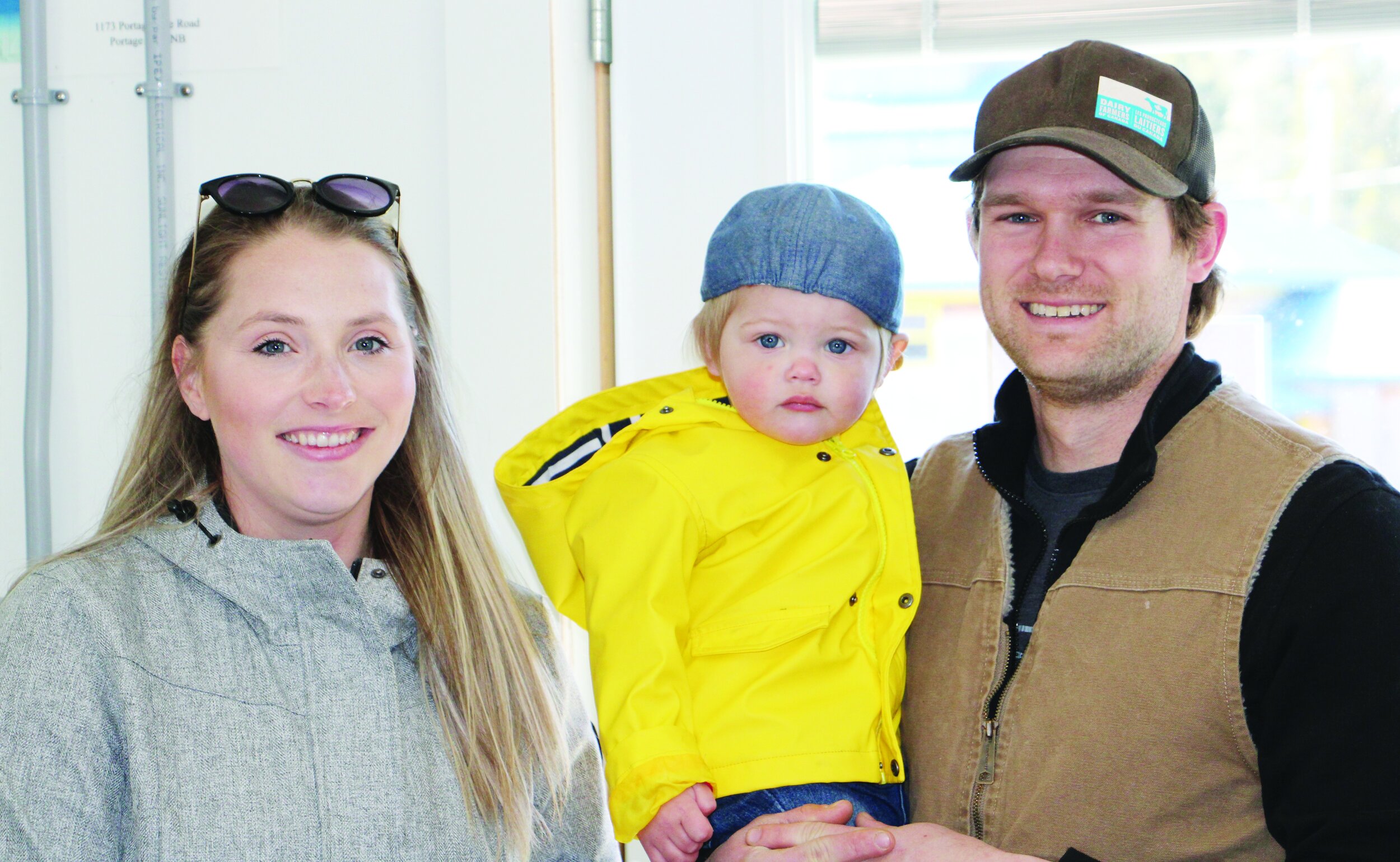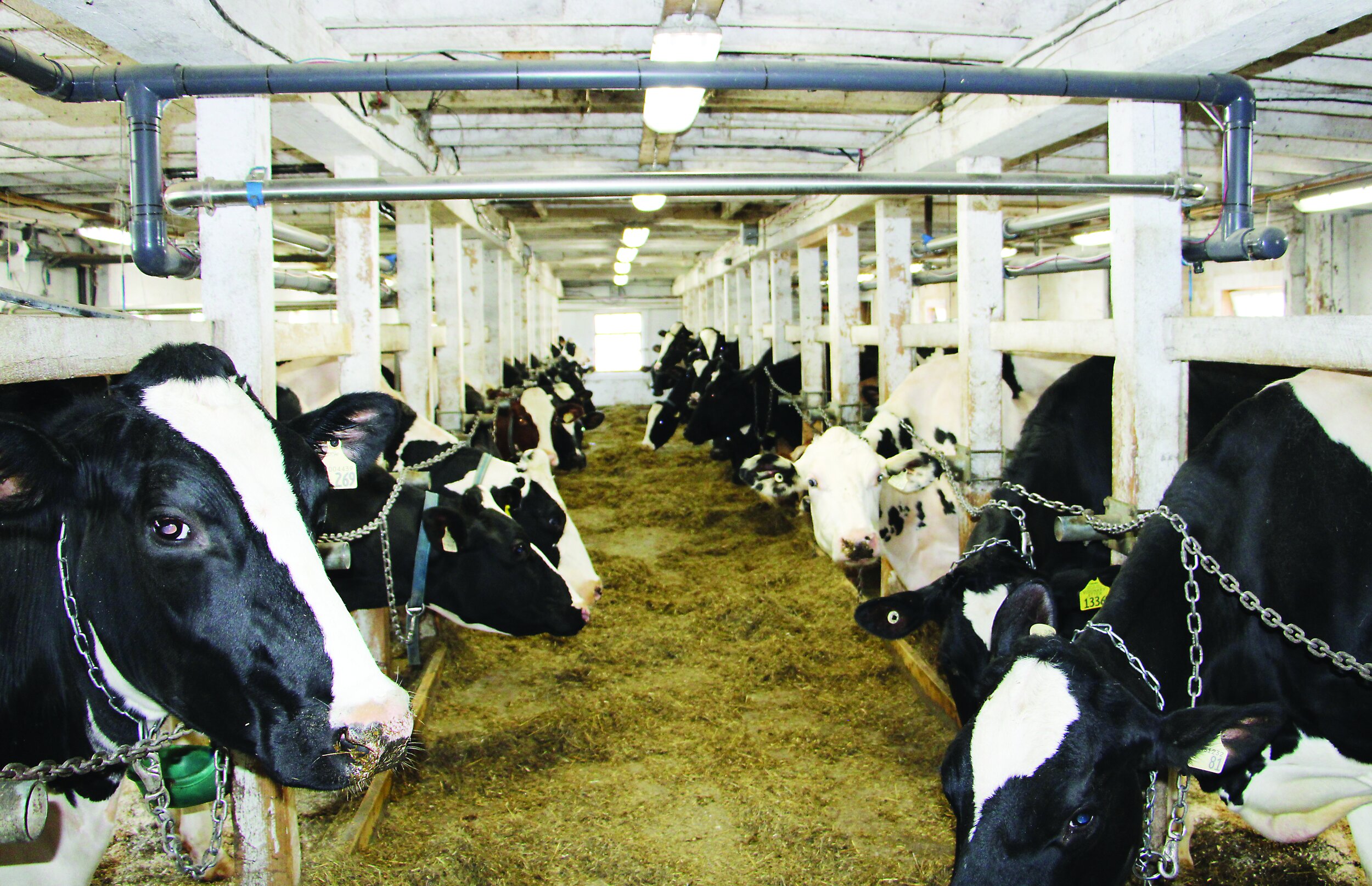Childhood dairy farming dream comes true
/by George Fullerton
Lindy and Scott Brown certainly weren’t expecting to win the Agricultural Alliance of New Brunswick’s new entrant award this year.
“We had no idea that we had even been nominated, so the call to show up at the Agricultural Alliance AGM banquet to accept the award was very much a surprise and an honour,” said Scott recently.
The banquet was held in Fredericton in January.
The Browns own a farm in Portage Vale, east of Sussex, and have been milk producers since the first pickup on Aug. 26, 2018. They milk 32 cows.
Scott said the idea of becoming a dairy farmer began in childhood when he would help out on his grandparents Reg and Jean Brown’s dairy farm near Sussex. “I always thought dairy farming would be the best possible career,” he said.
Through high school, Scott worked for Herb and Edgar Creighton on their dairy farm in Sussex. He then went on to obtain a business management diploma with a concentration in dairy farming from the former Nova Scotia Agricultural College (NSAC).
His future wife, Lindy Feltmate of Sherbrooke, N.S., also studied at the NSAC. The two became a couple, eventually married, and settled in Sussex, where Scott was working for the Creightons. They were also looking for a farm of their own.
FINDING THEIR OWN FARM
“We needed a house and we were determined to have a farm, so we engaged a real estate agent, but there were not many farms on the market,” said Scott. “It got to the point, we said, ‘OK, let’s just buy a house we can live in and find the farm later.’ We were dropping in on the agent to tell him and he shared that a new listing for a farm had just come in his office and he had to go get photos, and suggested we come along to see what kind of farm it was. When the farm came into view, I said to myself, ‘That is our farm.’ We made the deal to purchase it and moved in in the autumn of 2012.”
The farm consists of a rambling two-storey house, a gambrel-roofed barn with 32 head-to-head tie stalls, a tower silo, and 150 acres of land, with about half of the acreage cleared.
Lindy enrolled in the health sciences degree program at the University of New Brunswick Saint John in 2012, graduating in 2014. She followed that up with a master’s degree in organizational management from Crandall University in Moncton, which she completed in 2018.
Beef cattle were soon on the farm and the couple also produced vegetables, including squash under contract to Sussex Valley Vegetable Farms.
While his passion was in dairy farming, Scott went to work at the potash mine in Penobsquis in 2014, only to have it shut down in 2016. His next career move was working for Linda and Brian Walker with their Salers beef herd and strawberry operation in Lower Millstream.
“I really liked working for the Walkers and I learned so much,” said Scott. “They are great people and made time to share their knowledge and experience.”
The Browns’ neighbour Lloyd Gillies, who was recently retired from milking 60 cows on his farm, took a keen interest in seeing his new neighbours get a start in farming.
“We really hit it off with Lloyd,” said Scott. “He would usually visit in the dooryard or in the barn. He readily shared his advice whenever asked and we became great friends. One day, I was struggling with some round bale silage and Lloyd showed up and after watching me a while, he said, ‘You know, there is an easier way to do this. If you fix your silo unloader, I will help you chop your silage and fill the silo.’”
With the deal struck, Scott and Gillies worked together with Gillies’s equipment to harvest forage from both the Brown and Gillies fields. “It was a great arrangement for us,” said Scott. “In the autumn, we sat down and worked out a deal for using equipment and renting the forage land.”
NEW ENTRANT PROGRAM
“Lloyd was well aware of our ambition to someday milk cows, and shortly after the mine closed, he arrived in our yard and he had a piece of paper in hand. Out of his character, he came right into our kitchen and sat down. The conversation began with a review around our wish to milk. And he said, ‘I think you can do it and here are the numbers that says you can do it.’”
Gillies’s scenario included applying to New Brunswick’s new entrant dairy program. After consulting with family and a number of dairy farmers, and feeling the time was right, the Browns completed a detailed business plan and submitted an application.
The Browns believe that Scott’s past dairy experience and the fact that they had an operating farm helped get their application accepted.
The graduated entry program loans the successful applicant 16 kilograms of quota (which they begin paying for after 11 years) with the requirement for the applicant to buy an additional 16 kg. Since starting up, the Browns have added an additional seven kg of quota to their 32-kg base.
Early in 2018, they undertook barn renovations and obtained a new barn cleaner, a used tower silo, and a used tank and milking equipment. Scott proudly explained that the milk receiver jar and some pipeline was seconded from his grandparents’ retired milk house.
The Browns said the dairy farming community not only gave them spirited encouragement, they also gave them used equipment and even cows and calves. “The support we got was unbelievable,” said Lindy. “We would not be where we are without that amazing support.”
The Brown dairy barn is not impressive compared to modern barns. But there’s obviously a focus on cow comfort and productivity. The cows are on mats with dry shavings for bedding. The stalls are roomy and the cows appear relaxed, with high-quality silage in their mangers.
One important addition to the older tie-stall barn was the installation of two 72-inch ventilation fans.
“One fan operates continually and the other one is on a temperature-control switch,” said Scott. “They provide great air quality, which is very important for cow health and production. We have a yard to let the cows out for exercise. If I happen to leave the gate open in hot weather, nearly the entire herd will find their way into the stable to enjoy the air quality.”
GOOD MILK PRODUCTION
The Browns already recognize results from good practices, with their current production around 33 litres per cow per day, while the provincial average is 30 litres per cow per day.
“We were given a few cows but bought the bulk of our herd,” said Scott. “We could not afford excellent cows but we were able to accumulate a herd made up predominately of very good cows.”
Since cattle housing is limited, the Browns rely on contracting heifer raising and dry cow housing to Anthony Habraken.
“Anthony is an excellent cattleman and he puts up the very best forages,” said Scott. “We have worked out a deal which works for both of us, and our first heifer born to our herd is due to calve this August.”
On the family side, the Browns are proud parents of 18-month-old Aubrey and infant Grace. Lindy is on maternity leave from her job as a coordinator with the Dairy Farmers of Canada’s proAction program in New Brunswick and Nova Scotia.
“Successful dairy farming is not getting a few important things correct, it is more like getting a thousand small things right every day,” said Scott. “We always have a few bad days when things go wrong. But that’s OK as long as the good days outweigh the occasional bad ones.”
The Browns support the local agriculture community. In addition to belonging to the Sussex Co-op and the Sussex Holstein Club, Scott serves on the boards of the Princess Louise Park Show Centre and the Kings County local of the New Brunswick Soil and Crop Improvement Association. Lindy serves on the Dairy Farmers of New Brunswick’s Sussex region promotions committee.










